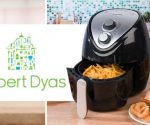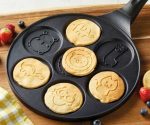Tesco unmasked: How YOU could have been picked out as ‘creme-de-la-creme’ shopper
[ad_1]
The UK’s biggest retailer posted bumper full-year profits in 2019, with a 34 percent rise in operating profit to £2.21billion – making them a strong market leader with 27 percent of the share – but, competition almost two decades ago couldn’t have been tighter. In 1995, Tesco sales overtook Sainsbury’s for the first time in its history and a struggle for the top spot ensued, then in 2003 ASDA became the second-largest supermarket in the UK, threatening to snatch the lead. With the likes of German discounters Aldi and Lidl on the rise – pressuring the Big Four by undercutting prices – there was an increasing need for each company to retain their respectable markets and attract new customers.
Tesco, which now boasts stores in seven countries across Asia and Europe, apparently had a system to entice its high spenders, reportedly known as “premium loyals”.
Visiting the Tesco Extra store in Beckton, East London, for the BBC’s “Shopping the Supermarkets” presenter Sally Magnusson said in 2007: “This vast cathedral of consumption is open 24 hours a day and it’s still expanding.
“It sells everything from food to HD televisions, 50,000 of us shop here and spends close to £2million every single week.
“We’ll be following a family of typical shoppers to find out how they are affected by all the in-store trickery.

Around 20 percent of Tesco shoppers make up 80 percent of sales (Image: GETTY)

Tesco’s is the leading supermarket in the UK (Image: GETTY)
The creme-dale-creme of shoppers
“For example, Khalid and Rita Rana are big spenders with four kids to clothe and feed, their weekly shop costs about £150.
“In supermarket speak, they are premium loyals, the creme-de-la-creme of shoppers, that all supermarkets would love to attract.
“But no supermarket ever forced a customer to make a purchase, their psychological approach is far more subtle, so we need some expert advice.”
The 2007 documentary then cited research from global customer data company Dunnhumby claiming 20 percent of Tesco shoppers make up to 80 percent of its sales.
Express.co.uk has contacted Dunnhumby for updated figures, to see how this data compares today.
Great Big Lockdown Survey: Tell us what life’s like for you by answering THESE questions

One family spent £150 on shopping (Image: BBC)
During the documentary, visual retail expert Karl McKeever detailed the so-called “psychological tricks” that Tesco was using to attract these big spenders.
He said: “We’re going to have a really good look around this store today.
“I think the important thing to realise is that a big, modern supermarket is just not a shop, it’s actually a retail theme park.
“They’re always trying to deliver what we call in the trade a ‘retail theatre’.
“So we’re going to follow the runners around the store, have a look at what they are buying and then really see what’s going on.
DON’T MISS
Weight loss: Drink TWO kitchen cupboard ingredients before bed [EXPLAINED]
How to live longer: One surprising thing centenarian drunk EVERY day [VIDEO]
Weight loss: Eddie Hall’s key cardio advise for getting into shape [REVEALED]

The series headed to a Tesco Extra store (Image: BBC)

Karl McKeever revealed some of the tricks of the store (Image: BBC)
“It’s really important for stores to try and drive sales, and they’ll do that with lots of promotions, and they like to position those in the promotion aisle, so that’s where we’re going to start.”
Mr McKeever took the team to the centre of the shop, where offers could be seen at the end of every aisle, alongside standalone promotions.
He added: “This is known as the power aisle, it’s one of the most important parts of the overall store layout.
“Just like on a map, it’s the major motorway throughout the centre of the store.
“Once a customer is here, they can usually find their way to everything they are looking for.
“Whether it’s big brand promotional deals, or the individual sub-departments, the power aisle is the heart of the store and the customer drives all of their decisions from this point.”
Mr McKeever explained how the power aisle drove customer’s purchasing decisions thereon.
He added: “Once in the power aisle, this is where customers can find all the really big deals.
“It’s typically where suppliers are keen to get their products in the most important part of the store.
“For every one product that a customer buys, they get another for free, in the industry, this is known as BOGOF – buy one get one free.”
Express.co.uk has contacted Tesco, who decided not to comment on the 2007 series or figures.
[ad_2]
Source link










